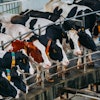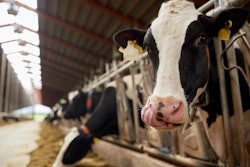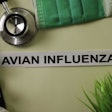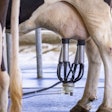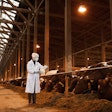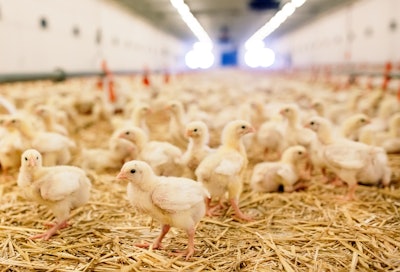
Significant changes to the way commercial operations raise and product poultry may need to occur to stop the current outbreak of highly pathogenic avian influenza (HPAI).
“Farms were built for efficiency. They were built for production. They weren’t necessarily built for disease control or biosecurity in mind,” Kay Russo, DVM, partner/veterinarian, RSM Consulting, said during the April 12 webinar, “What we know (or don’t) about H5N1 transmission on farms,” hosted by The Pandemic Center, part of the Brown University School of Public Health.
“I think the days of building four million bird complexes probably should be over, because once you get hit, that’s a huge loss.”
Those in charge of designing future commercial poultry complexes should be considering all of ways disease is spread, added co-presenter, Gail Hansen, DVM, MPH, senior consultant at Hansen Consult and former Kansas State Public health veterinarian.
Modern complexes house birds in close quarters, which combined with an ongoing battle to prevent contamination, can easily lead to the spread of infectious diseases like HPAI, she said.
“We see all these things happening in modern agriculture. Does that mean we have to change and if it does, what does it look like? I don’t have the answers, I just have the questions,” Hansen added.
Risk to humans remains low
As of now, the risk of a human pandemic remains low, but anytime a virus like HPAI mutates and passes between animal species, precautions should be taken.
Most of the human HPAI cases have been relatively mild and found in farm workers. However, since December, there have been two fatal H5N1 cases in people. Both cases were linked to the D1.1 genotype of H1.1, which represents the predominant genotype in the North American flyways last fall and this winter and has been identified in wild birds, mammals and spillovers into domestic poultry.
“In people, the genotype does seem to make a difference,” Hansen cautioned.
“I think our denominator is still unknown there,” added Russo. “I think we have to consider both as being major risks for us from an animal agriculture, as well as from a human health perspective.”
View our continuing coverage of the global avian influenza situation.
To learn more about HPAI cases in commercial poultry flocks in the United States, Mexico and Canada, see an interactive map on WATTPoultry.com.

